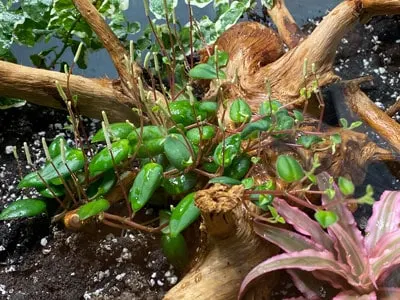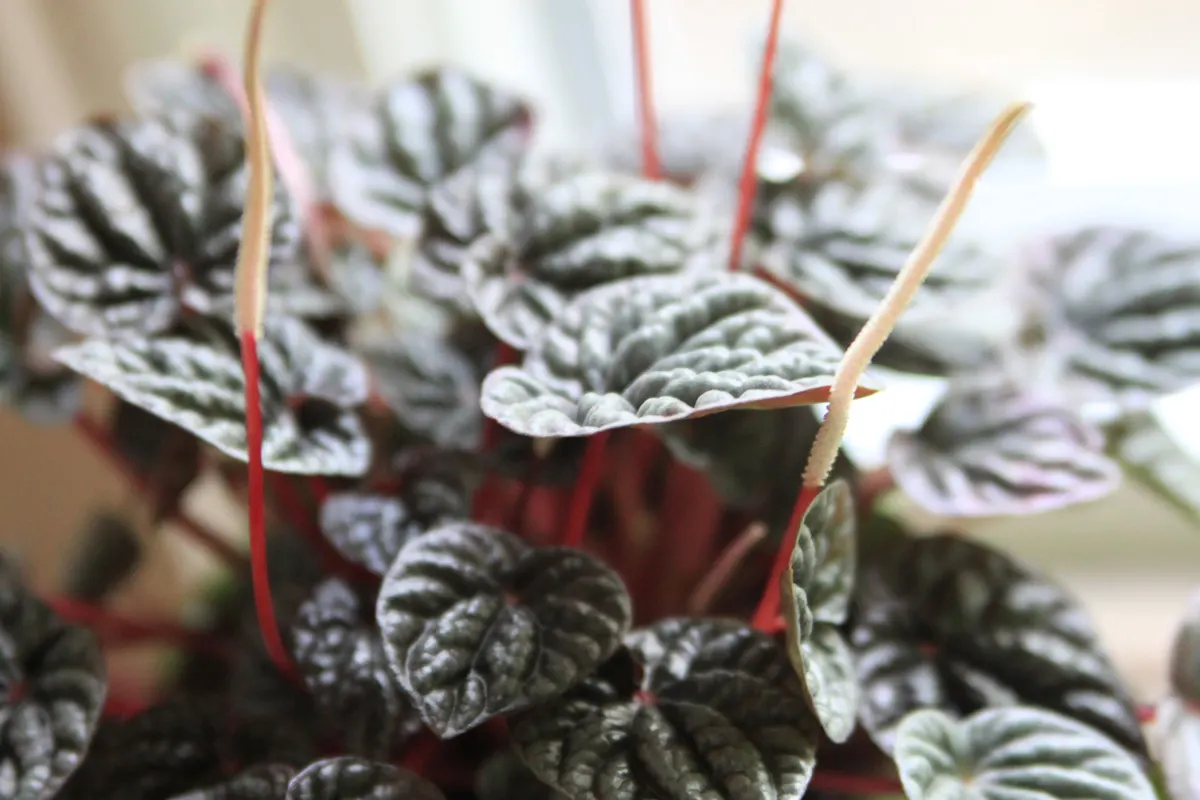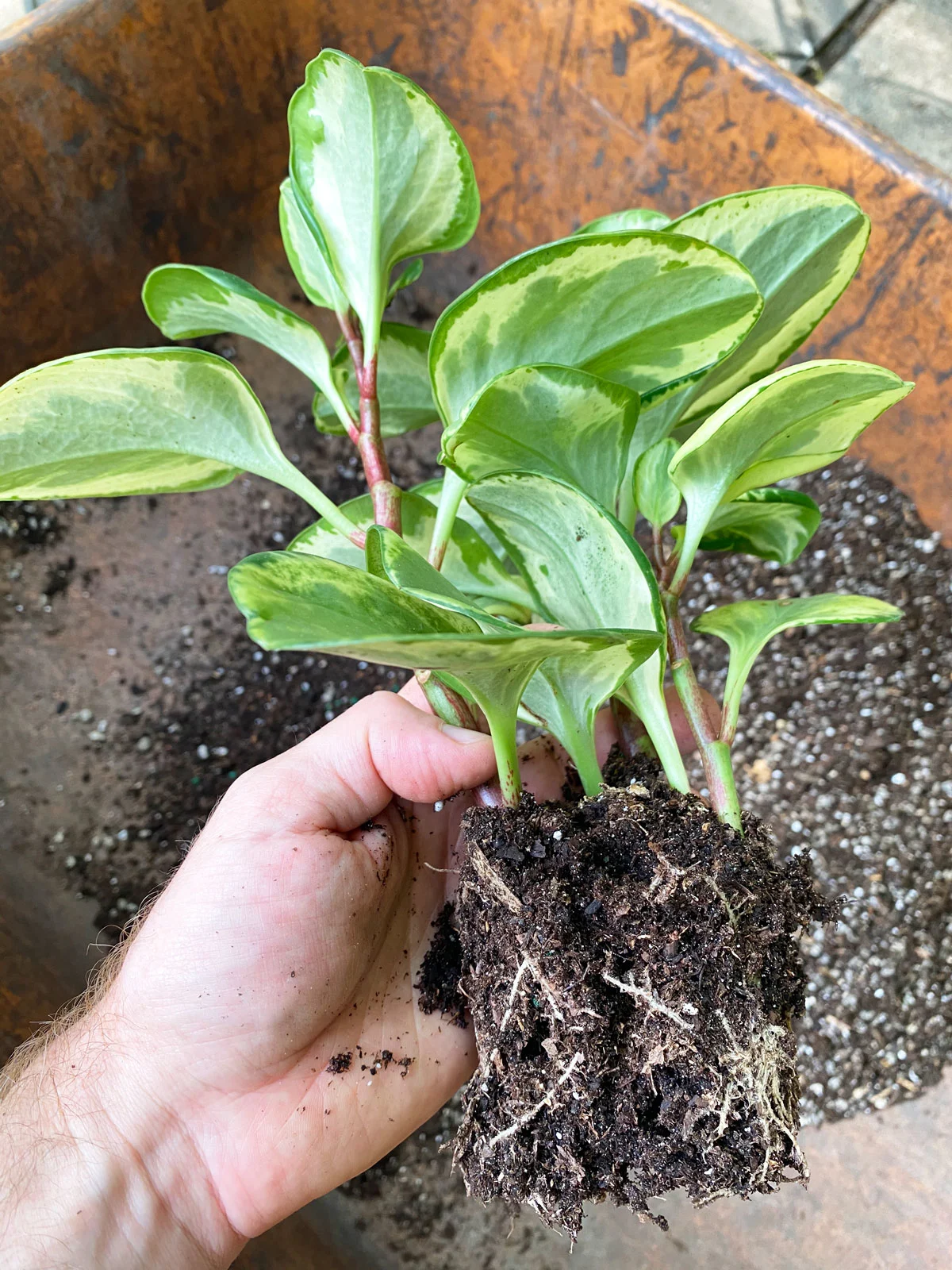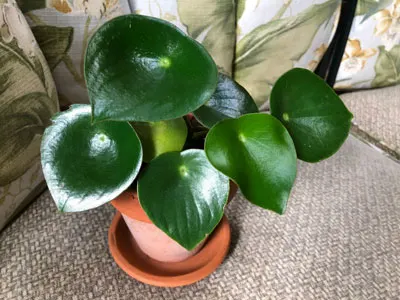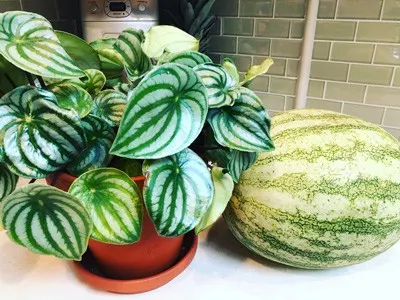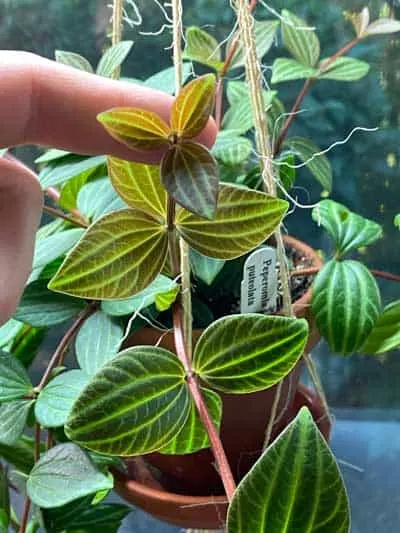Some of the links in this post may be affiliate links.
I’m loving the Peperomia genus more and more! The beautiful variety in growth habit, foliage shape and form (not to mention their ease of care) is truly a delight. Here are 10 easy to grow Peperomia if you are looking for ideas to expand your collection and try something new. They are among my favorites, and I know you will love them too!
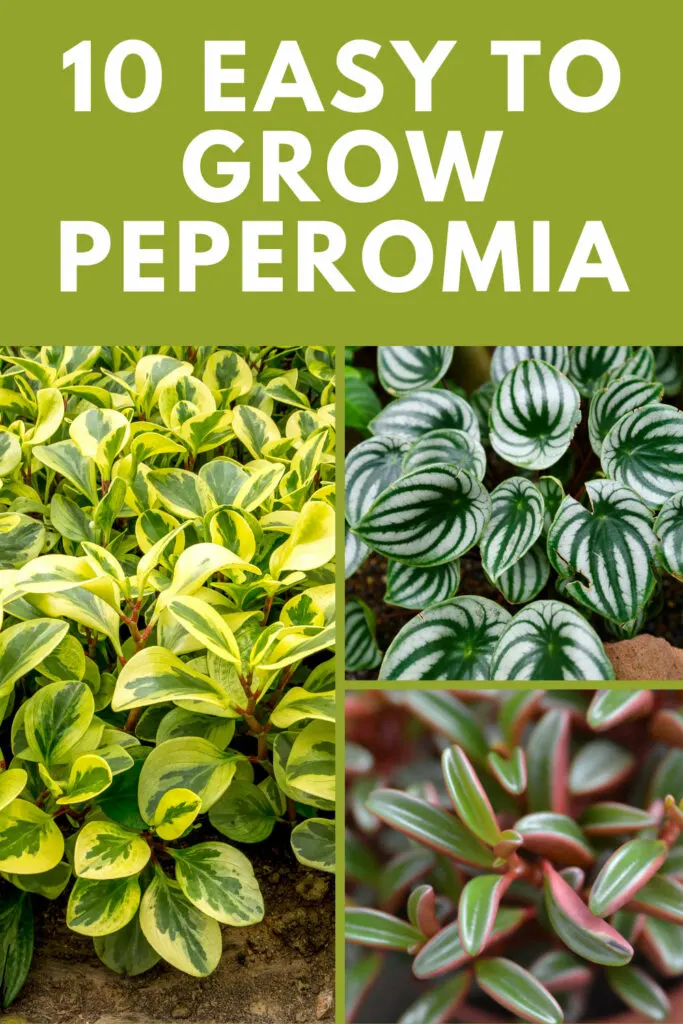
Table of Contents
EASY TO GROW PEPEROMIA
Here are 10 easy to grow Peperomia plants with some tips and highlights for each one.
For more detailed care tips on specific plants, see my own care guides that I’ve linked to at the bottom of this post.
1. Peperomia obtusifolia
Also known as Baby Rubber Plant (though it is not a Ficus), this plant comes in plain green as well as variegated.
Native to Florida and much of tropical america, the semi-succulent nature of this plant make it very tolerant of neglect.
I consider this one to be one of the easiest Peperomias to grow.
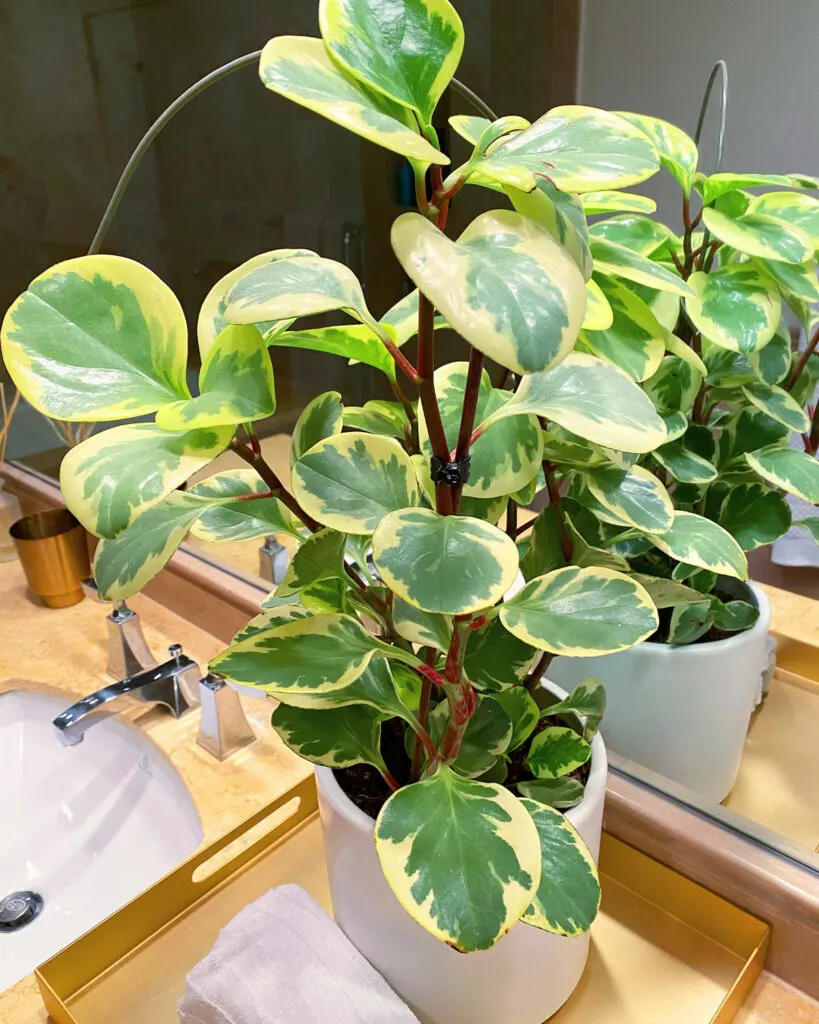
You can safely allow them to dry out completely. Just don’t wait too long before watering it again.
2. Peperomia polybotrya
Commonly known as Coin-Leaf Peperomia or Raindrop Peperomia, this native of Colombia and Peru has delightful foliage reminiscent of rain drops.
Like any Peperomia, be sure to let the surface of the soil to dry out before watering again. These don’t like to stay completely dry for too long, so try and strike a balance.
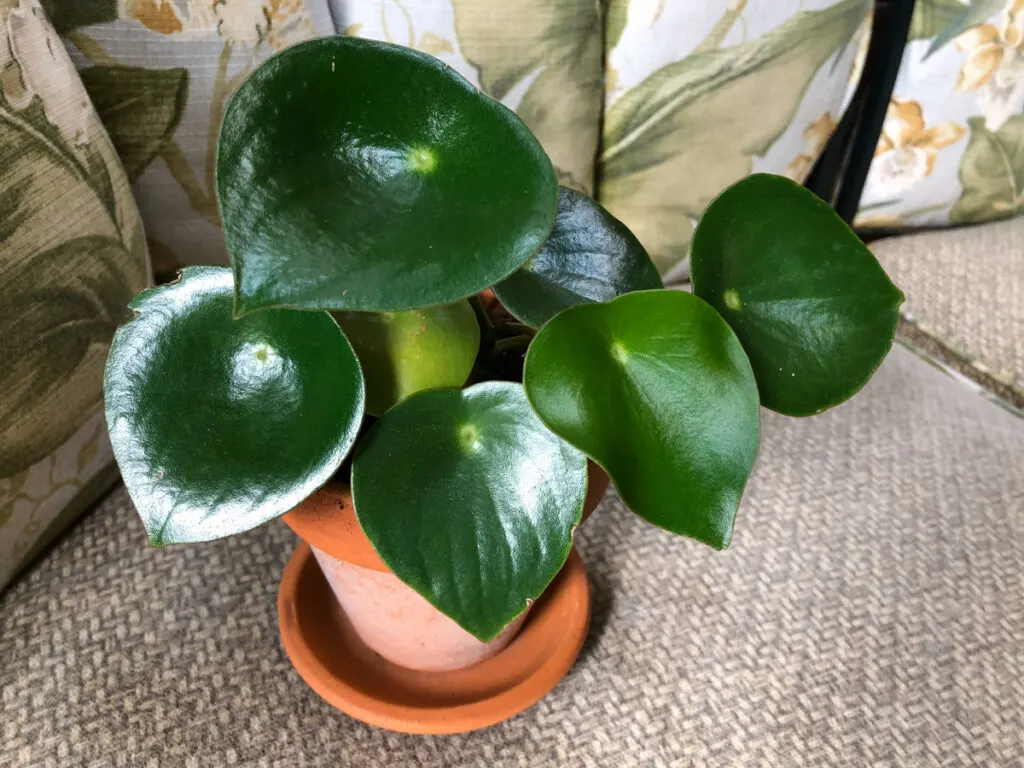
This plant is often confused with Pilea peperomioides, and for good reason. The leaves look very similar, but if you look in the photo below, you can clearly see the difference.
Pilea peperomioides leaves (top left) are round, whereas Raindrop Peperomia leaves (bottom right) have a point at the bottom of the leaf and the leaves themselves are thicker than the Pilea’s.
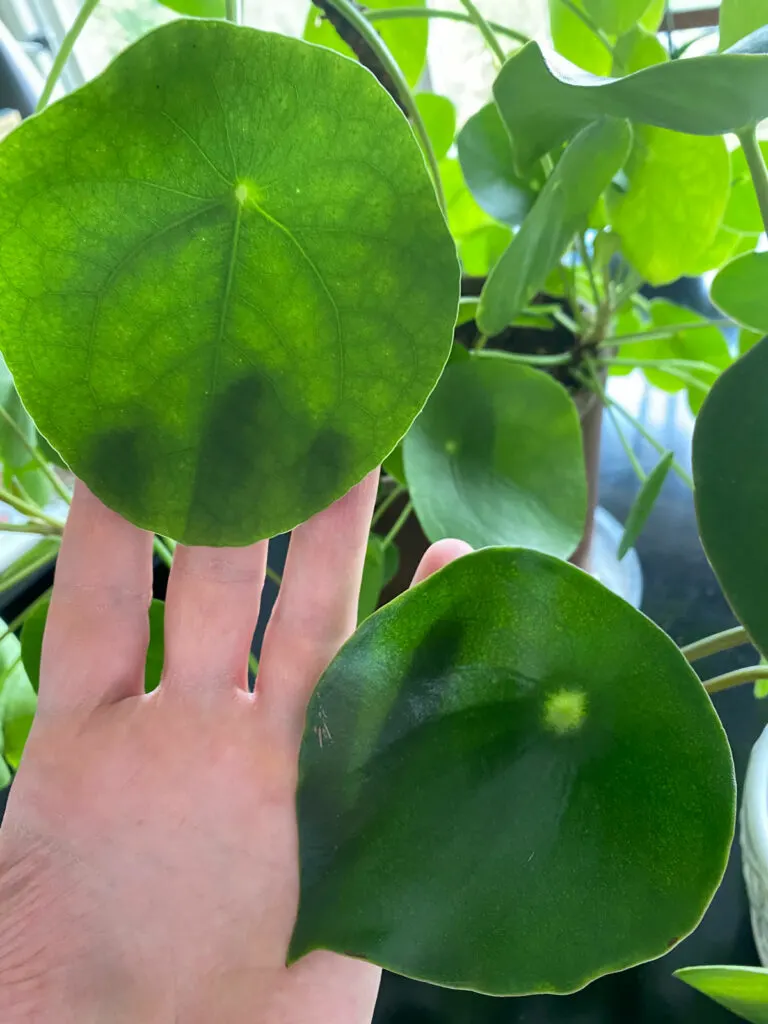
3. Peperomia puteolata
Commonly known as the Parallel Peperomia, this trailing species from Colombia might just be my favorite Peperomia, and also the fastest growing one that I own.
The plant starts off growing upright, and then starts to trail down as you can see from my plant below.
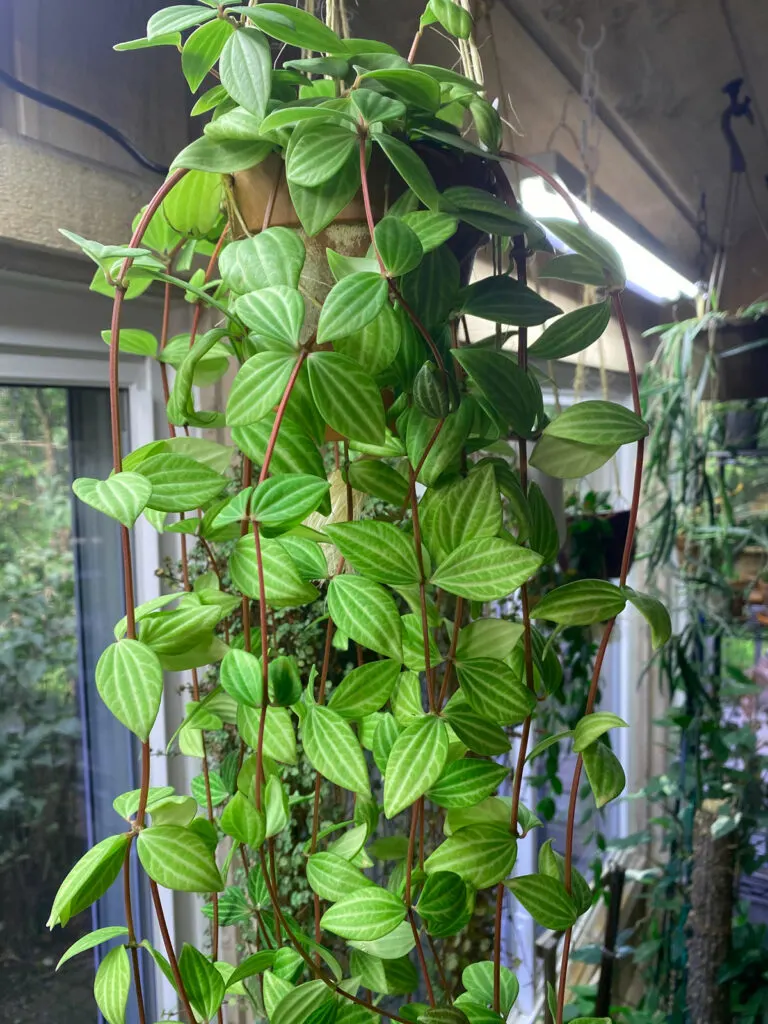
I love how the new growth has a bronze hue, which then matures to green.
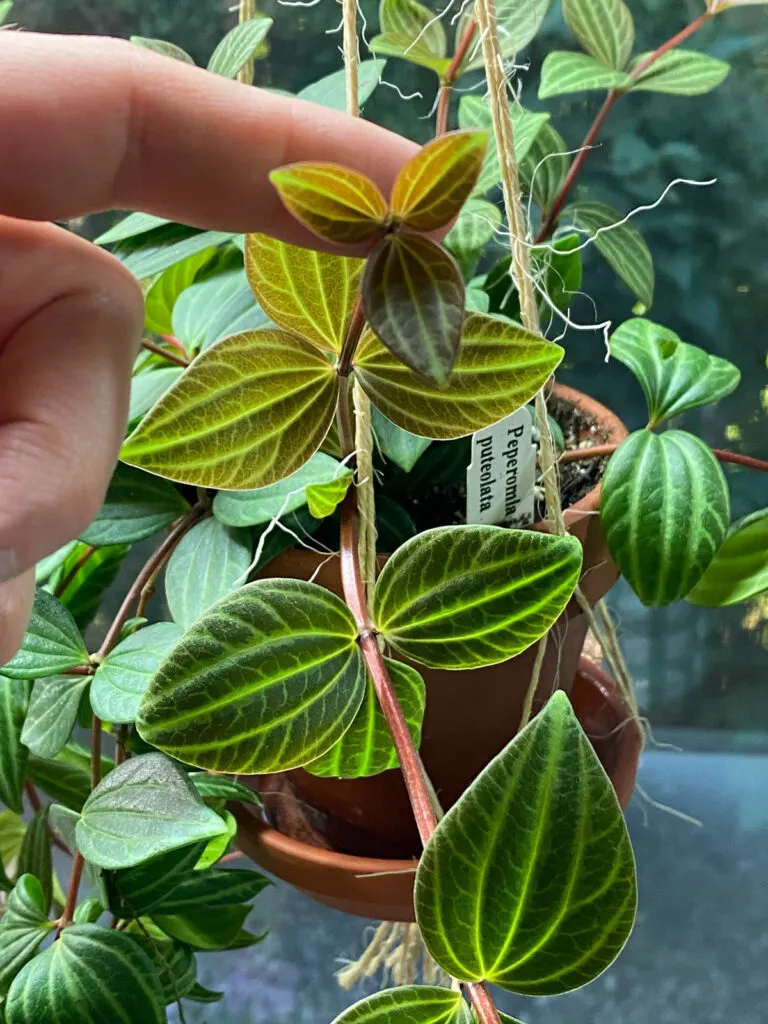
This one is very drought tolerant. My own plant grows in a 4 inch terra cotta pot. I allow it to dry out fully, and then water thoroughly.
At the time of writing this post, my plant is over 3 feet long! I highly recommend this Peperomia.
4. Peperomia argyreia
It is easy to see why this plant is called the Watermelon Peperomia.
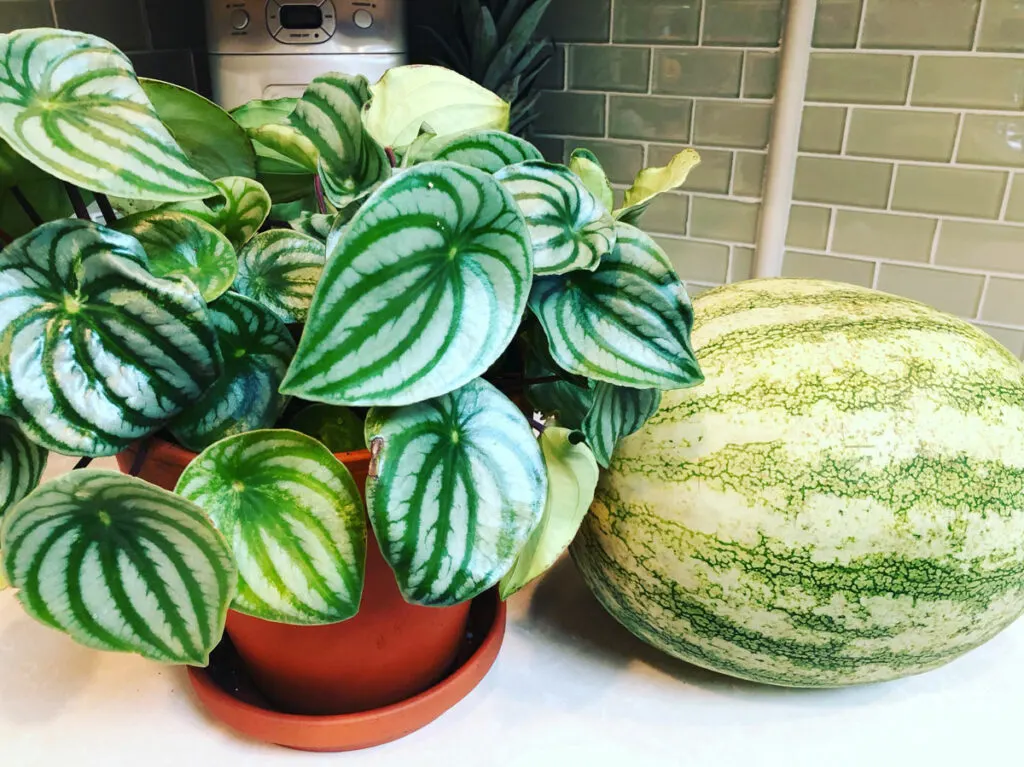
This one is easy to grow, but it not as drought tolerant as many other Peperomias.
Never allow these to go completely dry to the point of drooping, or they will quickly start to decline and you will lose a lot of leaves.
5. Peperomia ‘Ruby Cascade’
This beautiful trailing Peperomia has gorgeous red undersides on the leaves, and will trail a few feet long if you let it!
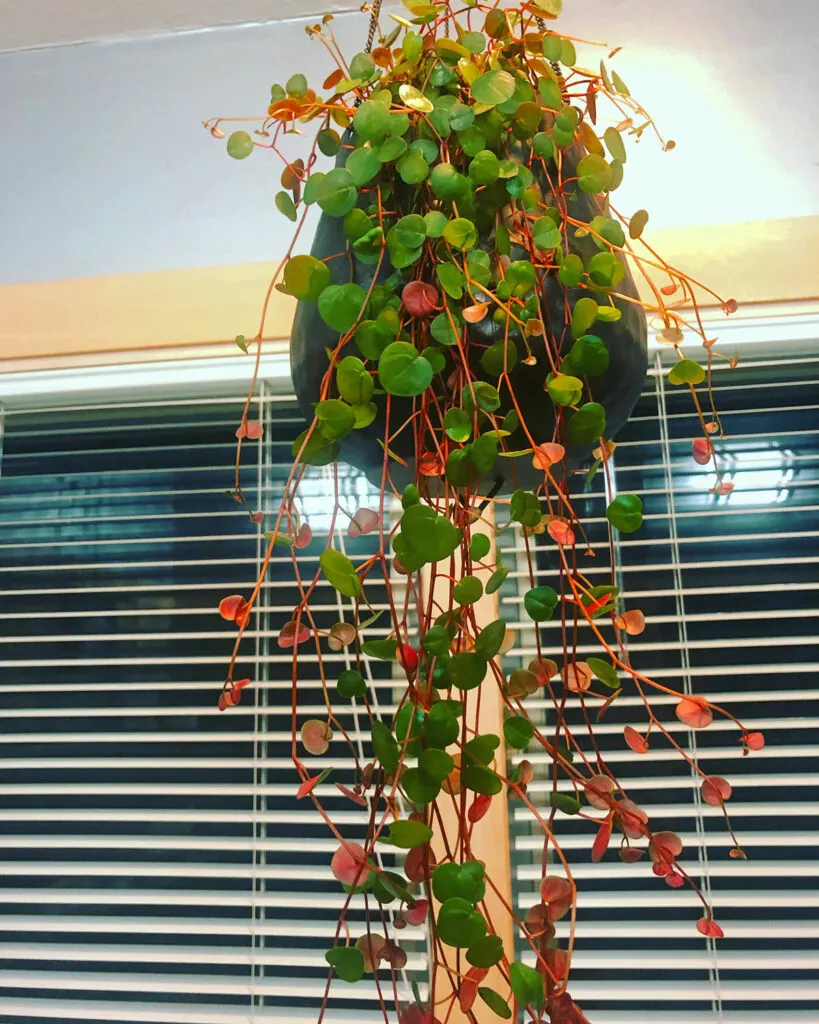
It also has the benefit of being very easy to propagate.
Many people lose this plant from rotting, so make sure that you give this plant enough light, allow your potting mix to dry out and that you have a sharply draining potting mix.
6. Peperomia prostrata
It is easy to see why this plant is known as String of Turtles. This dainty, creeping plant forms a beautiful mat of foliage that will trail down your pot.
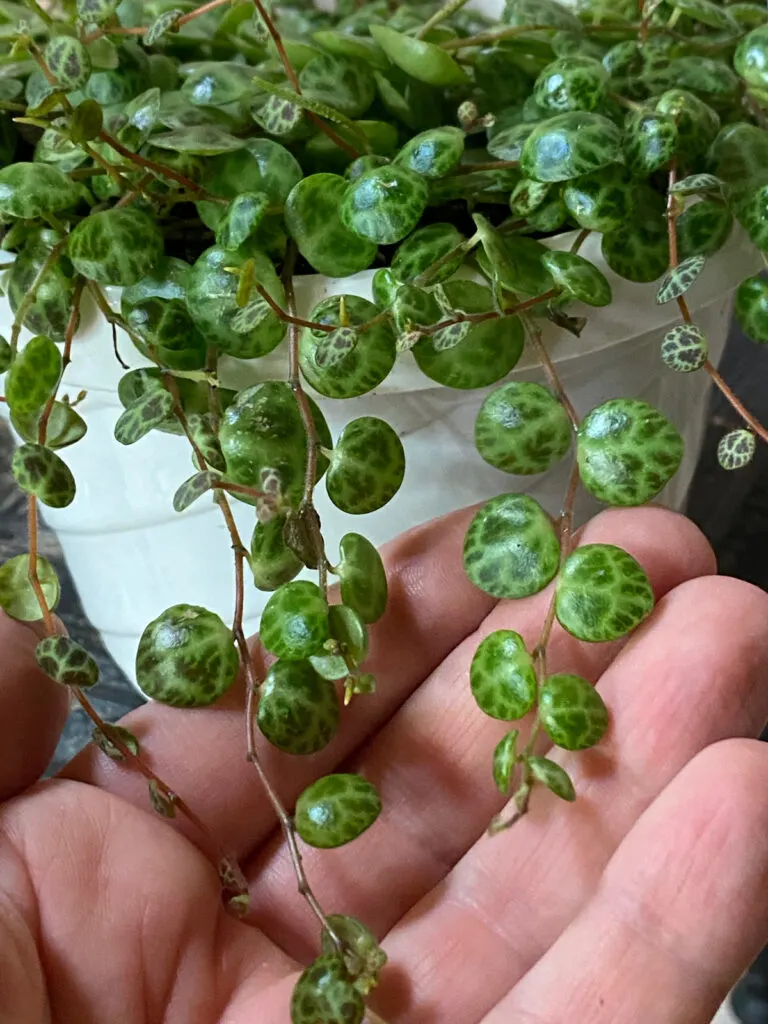
This one needs to dry out somewhat, but not completely like you can with Peperomia obtusifolia or any other Peperomia plants that have very thick leaves.
It will not tolerate going completely dry for long, and your plant will rapidly get brown leaves.
7. Peperomia perciliata
Sometimes classified as Peperomia fagerlindii, this is a a rarer Peperomia. I grow mine in a terrarium.
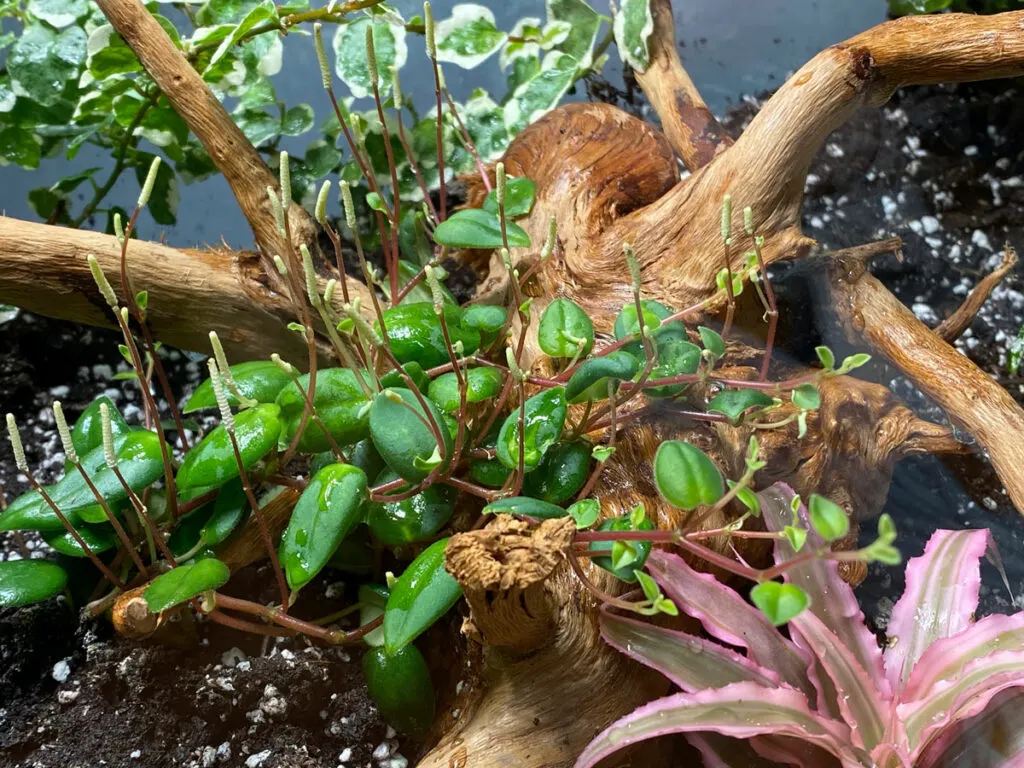
This native of Ecuador is now considered endangered in nature. It is a dainty species and will trail and spread.
It is very well suited to terrarium culture and will thrive in the higher humidity.
It will form a beautiful mat of foliage and even bloom easily as you can see in my terrarium photo above.
8. Peperomia caperata
It is hard to beat the quilted, textured leaves of this Brazilian rainforest native. This is a very compact plant that will stay tidy and a manageable size on your windowsill.
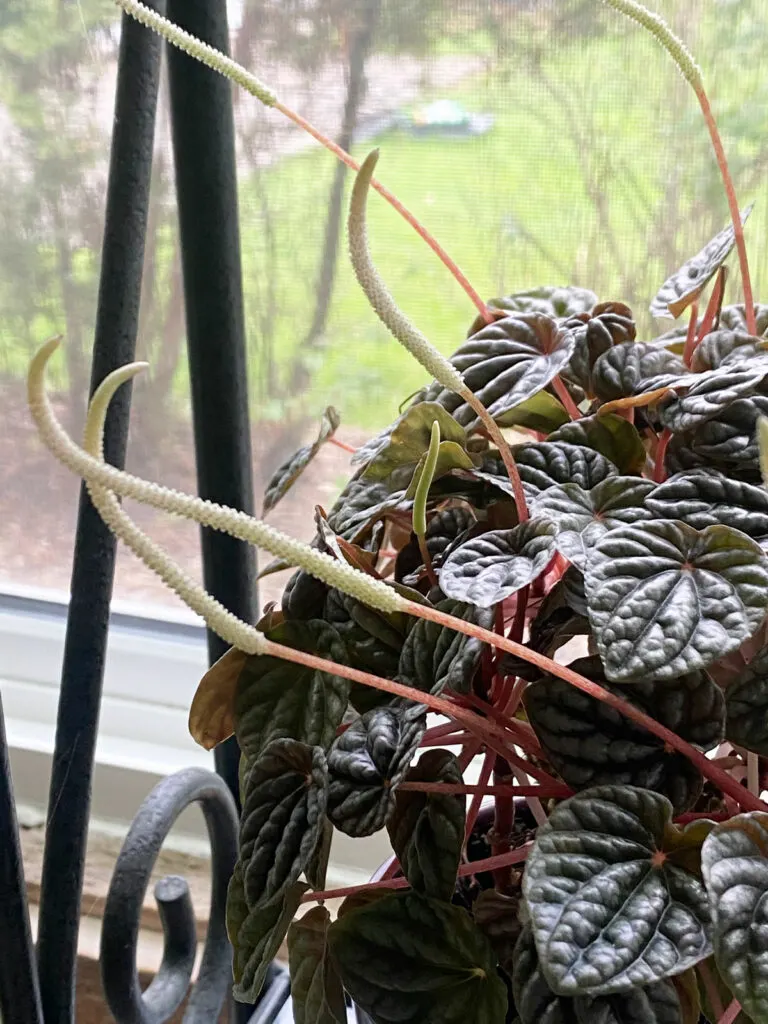
Easy to grow, the main thing to watch out for is strict attention to soil moisture. These plants are not drought tolerant.
Do allow the top inch or so of the soil to dry out, but do not allow all the soil to dry out. Your plant will droop and collapse and you will start to lose a lot of leaves.
If you can be consistent with this, you can easily grow this plant.
9. Peperomia graveolens
Commonly called the Ruby Glow plant, the thick, succulent leaves are colorful and beautiful.
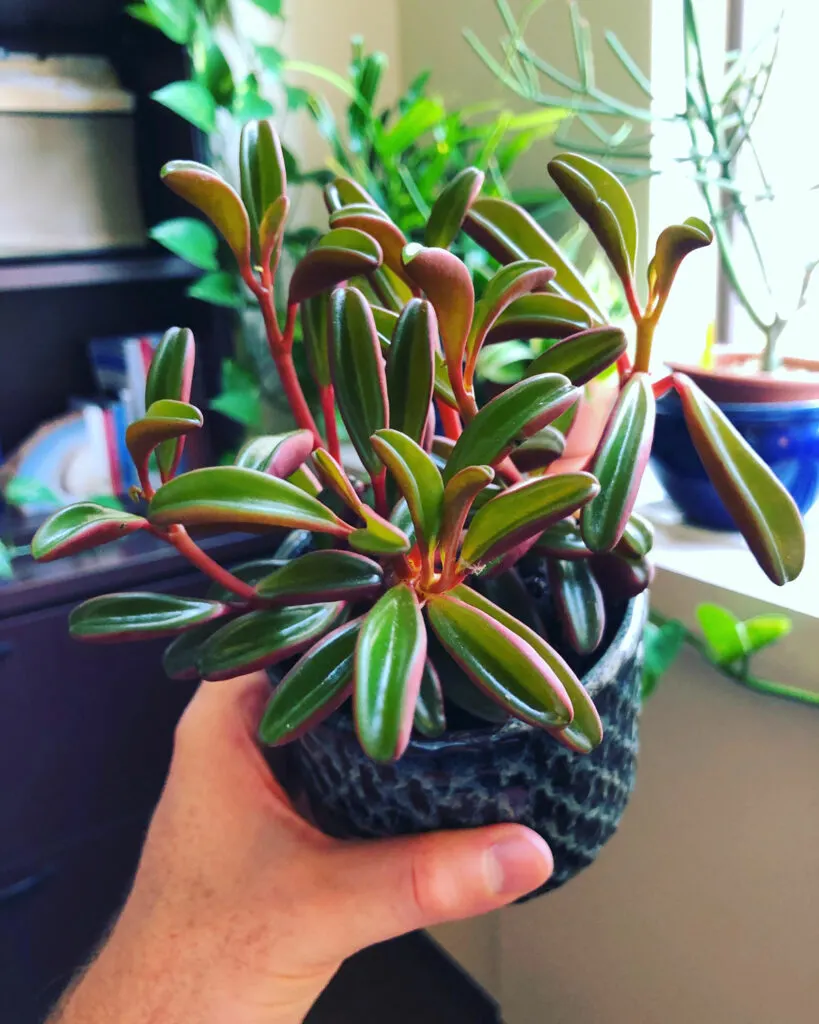
My main tip for this plant is to have a very rapidly draining, gritty mix. A 50/50 mix of potting soil and pumice easily accomplishes this.
If this plant stays too wet for too long, it can easily rot, often times right at the soil line.
10. Peperomia ‘Hope’
This lovely Peperomia is cross between Peperomia deppeana and quadrifolia. It has a trailing habit with leaves growing in clusters of 2 or 3, spaced out every few inches on each vine.
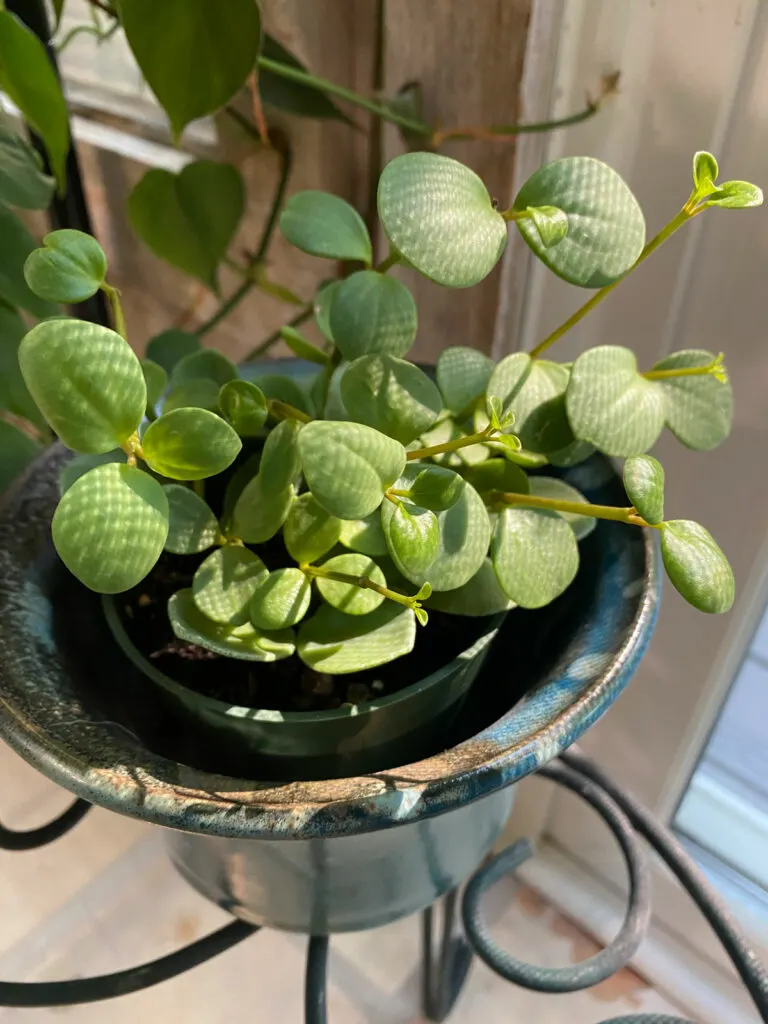
RELATED POSTS
For detailed care information on specific Peperomia plants, check out my care posts below:
Peperomia obtusifolia (Baby Rubber Plant)
Peperomia polybotrya (Raindrop Peperomia)
Peperomia puteolata (Parallel Peperomia)
Peperomia argyreia (Watermelon Peperomia)
Peperomia prostrata (String of Turtles)
What is your favorite, easy-care Peperomia? Comment below. I’d love to hear!

